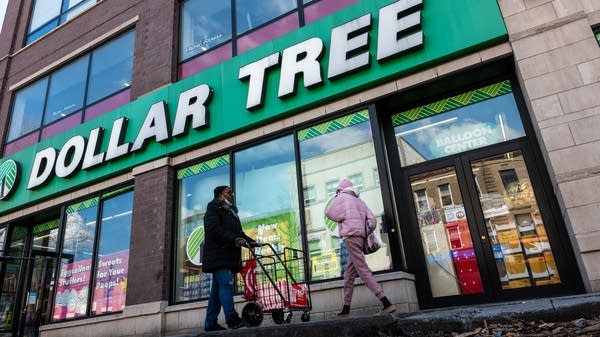Another worry for U.S. retailers: Dwindling numbers of tourists coming here and shopping
A tourism trade group reports tourism was down 14% in March compared to last year.

According to its latest earnings report, Macy’s saw a 1.2% drop in sales, including its online marketplace, from the same time a year ago during the first quarter. The company blamed that decline in part on international tourism. Specifically, that there’s quite a bit less of it than usual right now. According to the U.S. Travel Association, international visits to the U.S. were down 14% in March from the same time a year ago.
The Macy’s store on Herald Square in Manhattan is old and famous. It’s also a movie star: It’s where the "Miracle on 34th Street” happens. People want to visit it.
“It is part of the tourism experience. It's a destination in a way that isn't typical shopping,” said Katie Thomas, who studies consumer behavior at the consulting firm Kearney.
Now, with fewer visitors from Canada, western Europe and Asia, there are fewer of them to shop in famous flagship department stores. So they’re not buying as much of what they usually buy, whether it’s hand bags or make up or sunglasses.
Mark Mathews with the National Retail Federation said stores that carry classic American brands are likely to be affected.
“Being able to walk into a flagship Nike store in New York City for somebody who's a shoe-aholic, that's a real experience, right?” said Mathews.
Mathews points to data from Oxford Economics that predicts spending by international visitors will fall by $8.5 billion this year, compared to 2024. Shopping is a big chunk of that.
“If you take that away, and you take some of the other challenges right now that the consumer faces, there is a potential for things to be a little bit more problematic as we move forward in the year,” said Mathews.
Meanwhile, tariffs are making some items more expensive — and less attractive to tourists.
“It’s double whammy, if you will,” said retail consultant Mark Cohen.
Cohen said grocery and clothing stores in Sun Belt cities are also hurting because they usually sell a lot to Canadians who visit for a few months in the winter.
“They're not there. Their absence is already being noticed and will become increasingly problematic,” said Cohen.
Problematic because they could get out of the habit of coming to the U.S.
Katie Thomas at Kearney said a lot of shopping isn’t as much about brand loyalty as it is about habit.
“So when you think of Canadian consumers, maybe they come here just because they've always come here, and now they're going to second guess that vacation, same with Europe,” said Thomas.
So instead of a regular shopping trip to New York or Miami, they’ll go to Paris or Dubai and spend money at stores there instead.













